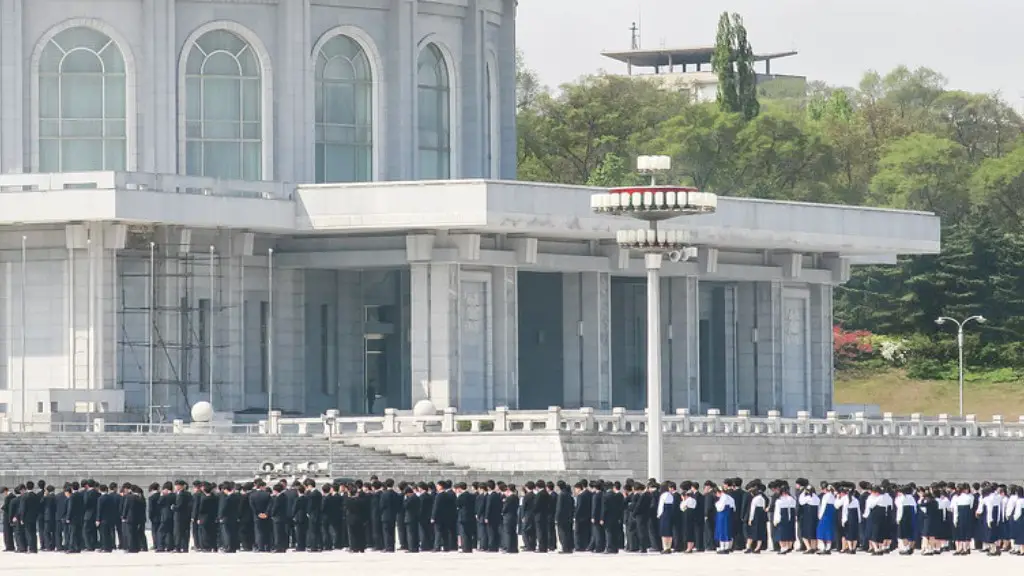Background Information
The Korean War began on June 25, 1950, when troops of the North Korean People’s Army (KPA) crossed the 38th parallel and invaded South Korea. The war lasted nearly three years and involved personnel from sixteen United Nations member states, with the majority of forces from the United States and the People’s Republic of China. At the conclusion of hostilities, an armistice was established, but no peace treaty was ever signed and both sides remain technically at war.
Most historians agree that North Korea’s invasion of South Korea was inextricably linked to the Soviet Union and China. Months before the attack, Joseph Stalin had been lobbying for greater control of the Korean peninsula and the Soviet Union had urged the North Korean leaders to launch a military strike against the South to reunify the Korean peninsula. North Korea had also applied pressure to reunify the peninsula by force, sending infiltrators into South Korea to cause unrest.
Motives of North Korea
The primary motive of North Korea in invading South Korea was to reunify the Korean peninsula in a way that North Korea would benefit from. North Korea sought to create a unified Korea under its own system of government and dominate the peninsula economically, politically and militarily. North Korea was also looking to tap into South Korea’s resources, gain access to the sea, and expand its territory.
In addition to selfish motives, North Korea also saw its invasion of South Korea as part of a larger Cold War strategy to establish communism as a dominant force in Asia. North Korean leaders sought to replicate Mao Zedong’s success in unifying China under communism after the Chinese Civil War, and were likely emboldened by the victory of the Chinese communists in 1949. North Korea was also likely emboldened by the Soviet Union’s support and military assistance, which included the provision of modern tanks and aircraft.
North Korea’s Preparedness for War
In the months before the invasion, North Korea had increased military preparedness, conducting exercises and holding military parades. The North Koreans had also significantly expanded their military forces and improved their weapons with modern Soviet weapons such as T-34 tanks, Yakovlev Yak-9 fighter aircraft and Katyusha rocket launchers.
KPA troops were also trained and well-equipped to deal with the mountainous terrain and harsh conditions of the Korean peninsula. With the help of the Soviets, North Korea had also laid the groundwork for a well-coordinated attack on South Korea with the deployment of special forces and the development of a detailed military strategy.
Unexpectedly Swift Attack
On June 25th, 1950, North Korean troops crossed the 38th parallel and invaded South Korea. The attack was swift, as the North Korean forces seized Seoul within hours and quickly advanced south with little initial resistance from the South Korean forces. The North Korean troops were also brutal, massacring South Korean prisoners of war and civilians as they advanced.
The speed of the North Korean invasion caught the United Nations forces off guard and the South Korean forces were soon overwhelmed by the North Korean forces. The UN forces suffered heavy casualties and were pushed back to the east of the peninsula. By September 1950, the North Korean forces had occupied much of the peninsula, while UN forces were pushed to the east near the port of Busan.
U.S. Involvement in the Korean War
The United States was alarmed by the swift North Korean advance and the UN Security Council determined that North Korea was acting in violation of international law. The United Nations authorized member states to use force to repel North Korean forces and defend South Korea and the United States led a coalition of UN forces to do so.
The United States sent the bulk of their military forces to Korea and, with the help of other UN forces, managed to push the North Koreans back to the 38th parallel. By November 1950, UN forces had recaptured Seoul and advanced north, capturing Pyongyang and leaving the North Koreans in a state of disarray.
China’s Involvement in the Korean War
In October 1950, the Chinese People’s Volunteers Army (PVA) entered the war on the side of North Korea, sparking a new phase in the conflict. The PVA quickly overwhelmed UN forces with their superior numbers and guns and pushed them back to the 38th parallel. By March 1951, UN forces had been pushed back to positions just south of the 38th parallel.
The Chinese army’s involvement in the war served to embolden the North Koreans and helped them retake Seoul in April 1951. In May 1951, UN forces launched a counterattack and managed to push the Chinese and North Korean forces back to the 38th parallel by September.
Armistice Agreement
The lack of a clear victor led to negotiations for a cease-fire between the Chinese, North Korean and UN forces. On July 27th, 1953, the cease-fire agreement was signed, bringing an end to the war. The agreement established a demilitarized zone along the 38th parallel and both sides agreed to an exchange of prisoners of war.
However, a peace treaty was never signed and North Korea and South Korea remain technically at war and divided along the 38th parallel.
Implications and Impact of North Korean Invasion of South Korea
The North Korean invasion of South Korea resulted in the deaths of millions of people, both civilian and military, and the displacement of millions more. The war also had a devastating economic impact, as the fighting destroyed much of the Korean peninsula’s infrastructure and resulted in heavy financial losses for both sides.
The Korean War also had a profound effect on the Cold War, as it resulted in a strengthening of alliances and an increase in armament among the superpowers. The war also resulted in an increased US presence in East Asia, which was seen as a threat to China and the Soviet Union.
Legacy of Korean War
Although the Korean War concluded in 1953, the impact of the war remains evident to this day. North and South Korea remain divided along the 38th parallel and they remain technically at war, with hostile relations and intermittent military skirmishes. In addition, North Korea continues to be hostile to the United States, frequently engaging in nuclear sabre-rattling and ballistic missile tests.
The Korean War is also seen as a defining moment in the history of the Cold War and in the history of East Asia. Although there were no victors, the war established a new world order in which the superpowers sought to control the international environment through proxy wars and alliances.
Cold War Climate
In the years preceding the Korean War, tensions were high between East and West as the Cold War between the United States and the Soviet Union was heating up. The two sides were engaged in a wide array of proxy wars in Europe, Africa and Asia.
The Cold War climate was also characterized by mistrust between the major powers and a fear of nuclear conflict. Both the United States and the Soviet Union had developed nuclear weapons and were engaged in an arms race. In addition, the two sides were also vying for influence in East Asia and were trying to gain control of territories in China, Korea and Vietnam.
Role of South Korea in the Cold War
The Korean War was a major event in the Cold War and the Korean peninsula was seen as an important strategic asset by both the United States and the Soviet Union. South Korea became a major base of operations for the United States and the other UN forces and was a key launching pad for US operations in East Asia. South Korea also became a major recipient of US military aid and development funds.
On the other hand, North Korea’s support of the Soviet Union during the Cold War led to an increase in military aid and economic assistance from the Soviets. North Korea also acted as a buffer state between China and the United States and was a key ally of the Soviet Union in East Asia.
Conclusion
The North Korean invasion of South Korea in 1950 was a major event of the 20th century and had far-reaching implications for East Asia and the world. The war resulted in the deaths of millions of people and the displacement of millions more, and it also heralded an increased US presence in East Asia and a strengthened role for the Soviet Union in the region. The Korean War also had a profound effect on the Cold War and the international environment, as it highlighted the power of the superpowers and the importance of the Korean peninsula. Although it is often seen as a forgotten war, the effects of the Korean War can still be felt today.



